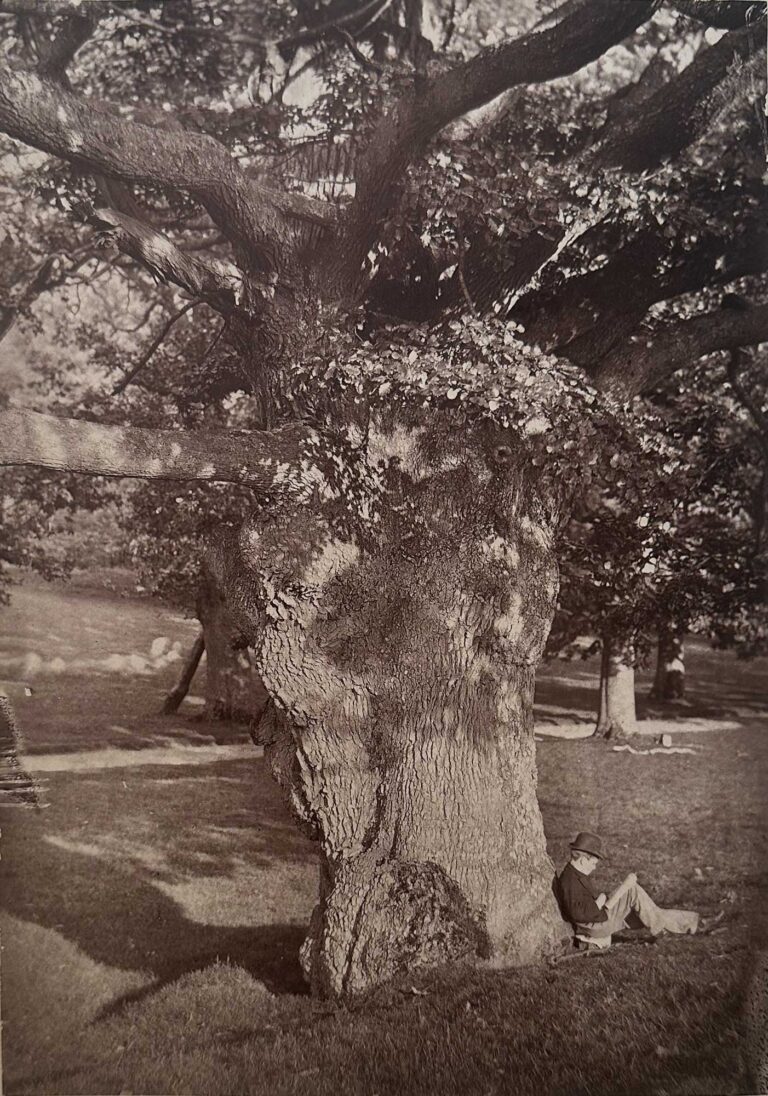
The Old Pier, Lynmouth
Descriptive letterpress printed opposite this photograph:
THE OLD PIER, LYNMOUTH.
THERE is no more romantic spot on the beautiful North Devon coast than Lynmouth! Ferny combes, and leafy hollows, opening out upon the gleaming waters of the Western sea, succeed each other all around the coast; but at Lynmouth the entrancing beauty of the scenery culminates.
Kingsley, in his unrivalled descriptions of its peculiar attractions, remarks that it is like no other English scenery. “To landward, all richness, softness, and peace; to seaward, a waste and howling wilderness of rock and roller, barren to the fisherman, and hopeless to the shipwrecked mariner.”
Two streams run down the picturesque valleys of West Lyn and East Lyn, and after falling in endless cascades over huge boulders, amidst dripping ferns and grasses, and beneath overhanging trees, clothed in rich, luxuriant foliage, unite their waters, and almost immediately after flow into the sea by the Old Pier.
It is low tide, and the wet sea-worn wall is glittering in the morning sun. The fishermen spread out their nets along the rampart, where they can all day hang and dry; or mend other nets under the shelter of cottage-eaves, beside windows smothered in fuchsias and myrtles. The picturesque old tower, worn by the wasting sea-breeze, and crumbled by storms into holes and fissures, stands like a sentinel looking out across the sea: as if listening always to the continuous uproar made by the junction of the tumbling streams on the one hand, and the long swell of the Atlantic waves washing the pebbly strand on the other. In the foreground, the huge slippery stones and rocks are decked with sea-weed and green moss.
In the little pools left by the receding tide are mirrored pictures of the lofty hills, the pretty cottages, and the great white billowy clouds above.
The whole scene to landward is shut in from the busy world by an upright wall of wooded combe, dotted with white cottages overlooking the sea.
Above stands Lynton, perched on a hill 428 feet above the sea-level. You may trace the steep path winding up from the beach, with resting-places here and there for the wearied pedestrian, until lost in the distance. The path to the Valley of Rocks at Lynton leads along the side of a fearful declivity until it suddenly opens upon a wonderful ravine, bounded seaward by a bastion of enormous rocks–rude, shapeless, and terrific, lying piled one upon another, like the ruins of some antediluvian world!
Nightly the Foreland glows with the light of setting suns. The warm colouring of the bold headland with its bands of purple heather when steeped in the splendour of sunset is a sight to see! Standing out so far in the sea-scape, it catches the last reflection of the sinking orb when all else around has faded into twilight grey, and then looks as though it were illumined with fires from within!



